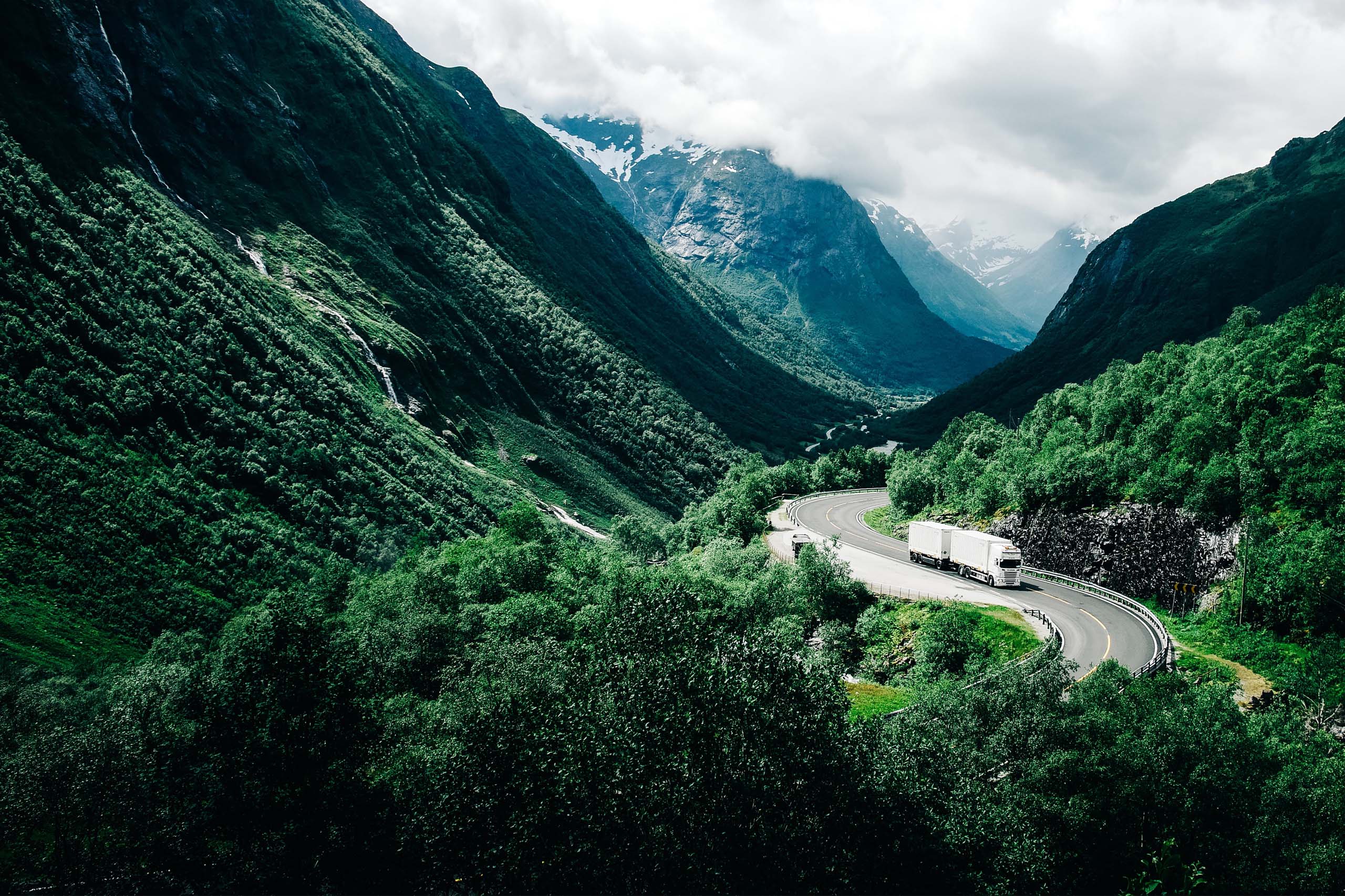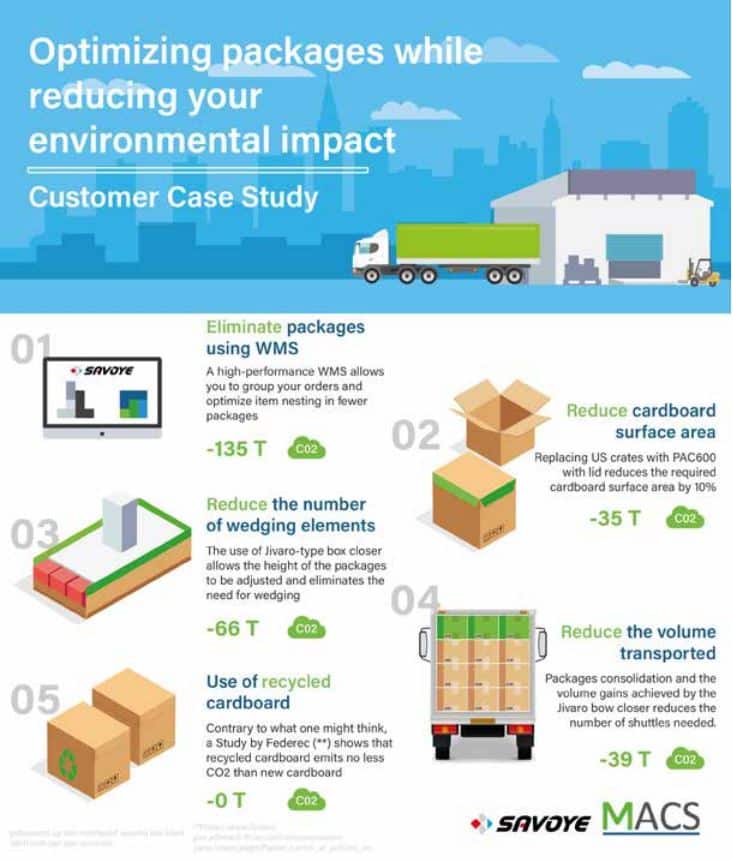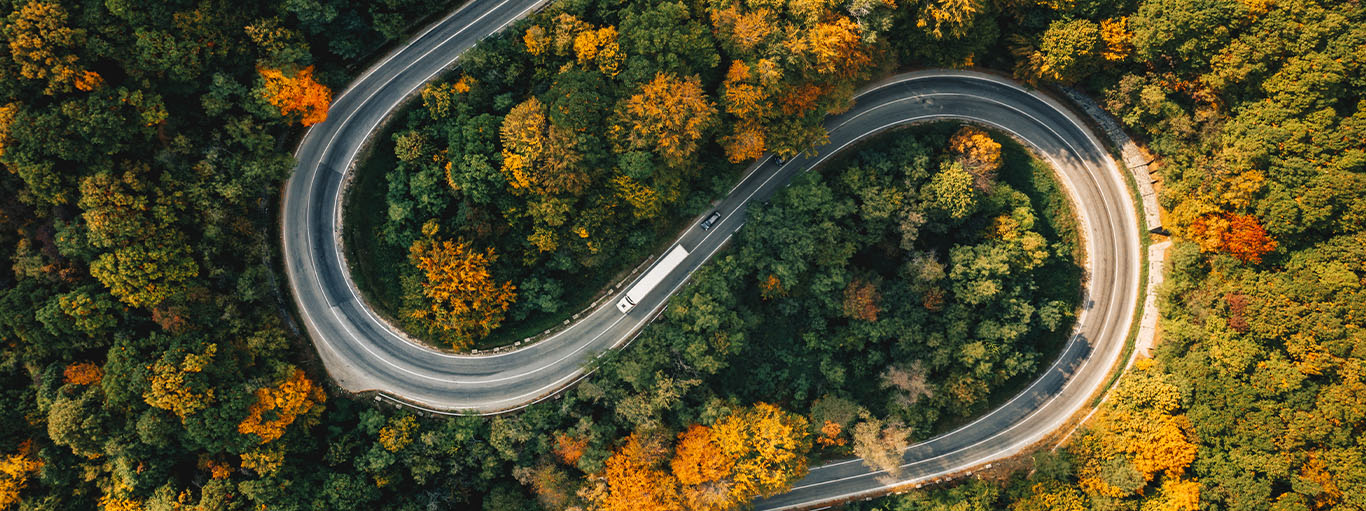Initial situation
In terms of Greenhouse Gases (GHG), the main issues are linked to road and air transport. But whether it is the location of factories versus that of customers, or the availability of low-carbon transport alternatives, changes will take years.
In contrast, internal levers are available as of today: they are linked to order preparation by optimizing the use of packaging. Let’s take a look at a concrete impact through the implementation at a distributor, a SAVOYE customer.
A distribution platform for hardware, tools and industrial supplies, located in France and delivering more than 120,000 references directly or via its branches to professional customers:
- Managing 3000 orders / day
- Shipping an average of 3,800 packages per day
- Using 5 different conventional RSC (US cases) carton formats, manually formed and closed
- With a 43% carton filling rate (o i.e. 69m3 of empty space shipped daily)
The project: the implementation of a latest generation WMS and three packaging lines, combining PAC600® formers and Jivaro® closing machines from Savoye.







